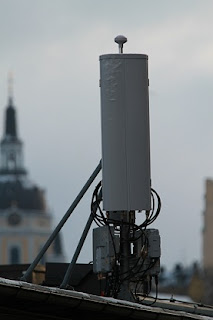– Peter Karaszi, Senior Consultant at Caprivi Public Relations, says:
Mobile operators across the globe are being squeezed by decreasing revenues per user, and a seemingly insatiable demand by users for more data. To efficiently manage the rapidly growing increase in data traffic in their networks, mobile operators need to build and improve their infrastructure in a much smarter way than they have hitherto done. Here, I take a look at some new infrastructural solutions that can help mobile operators do just that.
According to Cisco, the mobile data traffic in the world’s mobile networks grows by 150 per cent per year, driven by the emergence and use of smartphones, apps and videos. Traffic is expected to increase 26-fold between 2010 and 2015. Other sources have even scarier estimates, but the conclusion is the same: Mobile operators need to speedily improve their network infrastructure to handle this rapid and significant increase in traffic. There is enormous pressure on operators’ network equipment and networks – that the end customers are already experiencing by poorer coverage, slower up- and downloads, dropped calls etc.
And no, charging, restricting, or capping your way out if this predicament is no option for mobile operators. It is clear that they have sold data traffic too cheaply, but for most of them competition is now too strong to afford any major price increases. The end customers and cellphone users, like their smartphones and their apps and the ability to be connected all the time and everywhere, will expect more of the same rather than less (or more expensive) of the same. Cellphone manufacturers and application providers simply do not care – they keep churning out more bandwidth consuming products and services. As the saying goes, “give me bandwidth and I will fill it”. It will really never be enough.
On the flip side, there is an emergence of smart technical infrastructure solutions that can help mobile operators manage the increasing data traffic. The solution is not to build more base stations, but rather to preserve existing capacity. An area where there has been rapid technological developments is in antennas.
Antennas??
Antennas are regarded as a low-tech and inexpensive commodity in a network. But Swedish antenna specialist CellMax has developed ultra-high efficiency antennas that are based on quasi waveguide technology with air as dielectric instead of cables. Traditional antennas lose 20-60 percent power through the cables. Air loses close to zero. With ultra-high efficiency antennas, mobile operators can reduce the power consumption in their radio networks by up to 30 percent – or use the same amount of power to improve network performance. CellMax’ antennas also provide a better delimitation of the cells with a better focus inside the cells and a sharper cut-off outside the cell; to minimize unnecessary spillover and interference.
With a higher signal strength, mobile operators can achieve an increase in geographical area coverage, improved indoor penetration, increased traffic, improved data throughput and reduced production costs per call – all without any increase in power consumption. So fewer base stations will be needed.
Another solution that deals with suboptimal transmission, is the distributed antenna systems (DAS) for active distributed coverage offered by companies such as Delta Node. From base stations, signals are transmitted via fiber to small one-sector antennas with radio heads that are close to the users, indoor or in clearly defined outdoor areas.
The DAS solutions are, in short, based on the mantra “dominance and containment”: focus the transmission on the user, do not “waste” the signal on areas outside your focus area, and block all interference. Another benefit of DAS is the ability to build multi operator networks and multi band networks in the same architecture, which is valuable when site sharing and when covering different venues.
In conclusion, mobile operators need to take a hard look at their business models and their infrastructure to efficiently manage the explosion in data traffic. Maybe some operators can get away with restricting data or charging more for it. But for most, investing in new, smart and more efficient infrastructure is the way to go – and one that could also give them a competitive edge.
Peter Karaszi is a communications expert in intelligent telecom solutions based in Cape Town, South Africa.




